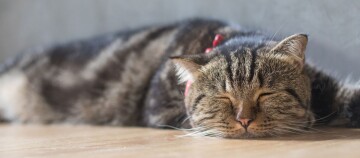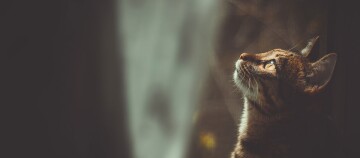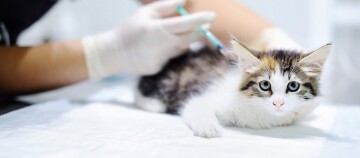The Cat's Nose - When the Nose Indicates Disease and How to Help
23.11.2022 - Reading time: 4 minutes
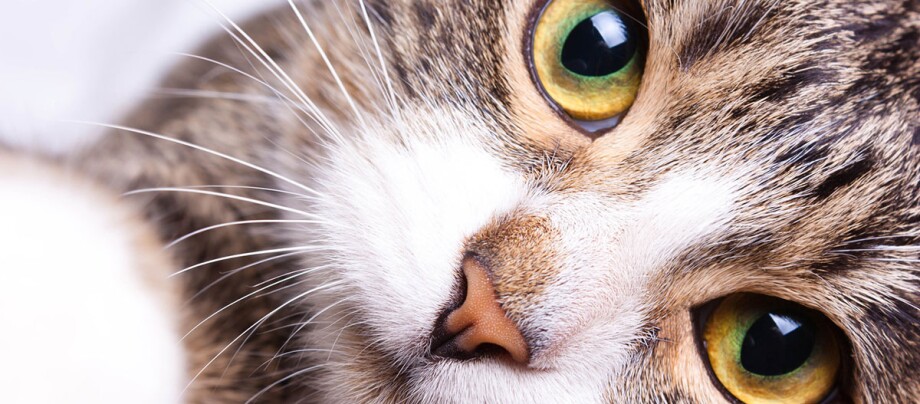
Unlike dogs, the nose plays a secondary role in the cat's everyday life: cats hunt by sight. Nevertheless, the nose is an important sensory organ for domestic cats: they use it to analyse scent messages from other cats, to locate food sources - the mother's teats as well as the open food can in the kitchen. As a cat owner you should be attentive if the sense of smell or the condition of the cat's nose suddenly changes. There may be a serious illness behind it.
What is the anatomical structure of the cat's nose?
The cat’s nose consists of the nostrils, which lead to the nasal cavity and the paranasal sinuses and are separated from each other by the nasal septum made of bone and cartilage. The nasal cavities are closed at the bottom by the palatal plate. The nasal cavities are lined by the nasal mucosa. A specific region in the mucous membrane is responsible for the cat’s sense of smell. Above all this sits the bony bridge of the nose. The tear duct provides a connection between the cat’s eye and nose. Outside the actual nasal apparatus, located on the upper palate, is the “Jacobson’s organ” found in many animals, which serves to analyse particular odours. A cat’s nose is dark or pink, depending on the individual cat, and feels like a fleshy button: A healthy cat should have a moist nose. Curious: The “nose print” of a cat is as individual as the human fingerprint.
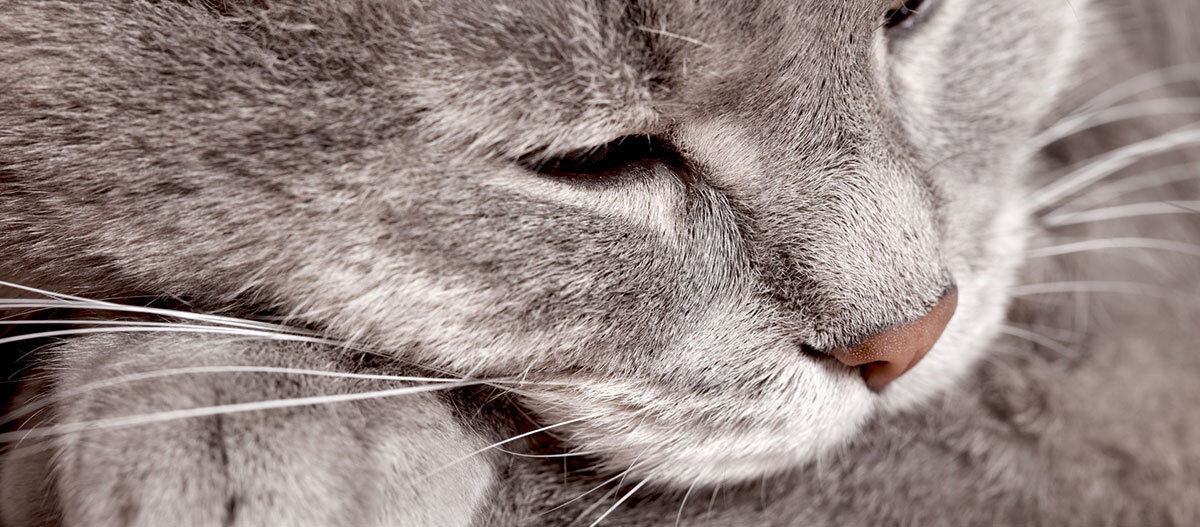
How does a disease of the nasal organ manifest itself in cats?
Normally, a relaxed cat’s nose should feel cool and slightly moist. A brief drying or warming of the nose, for example after sunbathing or a good romp, is normal, but you should keep a close eye on any prolonged change.
An indication of a pathological change in the nasal area is when the cat rejects food. The reason for this is that the cat’s sense of smell is used to assess the quality of the food, for example to recognise spoiled food. It is directly connected to the sense of taste. You know this from your own experience: if you have a blocked nose, all food tastes bland.
A cat’s nasal secretions should always be clear. A discolouration to yellowish or white indicates an infestation with viruses or bacteria. Changes in the consistency are also an alert sign: If the discharge becomes mucousy, sticky or even bloody, there is probably a serious illness. Also be sure to look for an unpleasant odour. These changes in nasal secretions can indicate complex diseases such as cat flu. A clear, watery nasal discharge indicates a cold, but can also be a reaction to constant stress.
In any case, the vet can narrow down the causes of a cat nose disease by taking a swab or performing an endoscopy and find a suitable means of treatment.
What can I do to help if my cat has a blocked nose?
To treat an upper respiratory infection, the vet will prescribe expectorant medication. If the cat’s nose is stubbornly blocked and the cat cannot clear the crust by sneezing, you will need to intervene: You can clean the cat’s nose with a baby wipe. Be very calm and relaxed with the cat. It is preferable for a helper to hold the cat. By the way, only an illness can block the nostrils. Dirt or food remains can also get into the nostrils.
Medicinal inhalations can also help to clean the cat’s nose. To do this, place the cat in a transport box with the door closed and place a bowl of inhalation solution in front of it. Cover the box and the bowl with a large towel so the cat can breathe in the healing vapours. Caution: Use solutions according to veterinary instructions: Many common essential oil solutions are harmful to cats. Even chamomile tea is counterproductive if the cat also has eye irritation!
What are the diseases of the nose?
Noticeable changes in the nose often turn out to be symptoms of more complex diseases. Rarely is the nose affected as an isolated organ.
The following diseases of the nose can occur:
- Sores, crusts or cracks on the nose indicate a skin problem or an allergic reaction. A fungal infection, eczema or the development of an ulcer also occasionally occur in the cat’s nose area. If the cat scratches its nose frequently and treatment with Vaseline does not bring any improvement in the short term, you should consult a vet for clarification.
- A permanently dry nose in cats could also indicate an organic problem with fluid balance.
- Strong discharges with unusual colouring should also raise the alarm. In rare cases cats suffer from chronic nosebleeds when they are otherwise in good health. These may be harmless, but can also be an expression of a variant of cat flu or of foreign bodies, tumours or dental diseases.
- If the cat sneezes frequently or cannot breathe through the nose, the upper respiratory tract is diseased. In the more harmless case, a cold could be present.
